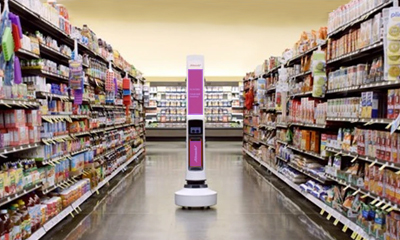Your personal data shared with us through this form will only be used for the intended purpose. The data will be protected and will not be shared with any third party.
Your personal data shared with us through this form will only be used for the intended purpose. The data will be protected and will not be shared with any third party.
Executive Summary
Where supply chain activities are becoming automated, the use of robots has proven optimal for shelf conformity and stock integrity. This case study tries to present the experience of a large retail chain to work with robotic systems for shelf audits and their effectiveness in increasing efficiency and accuracy within the store.

Background
Problems such as stock-out situations, over-stock situations or misplacement of product inventories are generic challenges across the retail industry. Normal shelf checking methods by human beings is tiresome and full of inaccuracies. In order to overcome these problems, such a retail chain signed a contract with a robotics company and introduced identical unmanned robots with purposes of shelf audit. However the Robots needs monitoring to ensure the tasks are accomplished as desired.
Objectives
Implementation
1. Chosen Technology The mobile retail chain chosen technology consists of a series of robotic that comes with imagining technology, RFID scanners, and machine learning. These robots were self-driving and were equipped with capability of recognizing products and evaluating compliance level of shelves.
2. Deployment strategy The company initially piloted the system in 10 stores before the rollout across the firm’s outlets. The robots were used at certain time of the day in order to reduce their interference with normal business. In order to manage the robots, the staff were trained how to approach them and also on the interpretation of the obtained results.
3. Data Integration The robots were also integrated with the stores current inventory system so the status of the store stock and the position of the products in the store was constantly updated.
4. Monitoring The robots are monitored manually to ensure the navigation path and provide remote support and trouble shoot for technical issues.
Results
1. Efficiency Improvements
2. Accuracy Gains
3. Customer Insights
Challenges
1. Technical issues - Several emerging problems were noted within the pilot phase: Some of the robots that were deployed initially faced challenges of Navigation when in congested aisles. It was adapted to have remote robot monitoring and navigation and our team members were trained to control robots remotely.
2. SKU Identification - It is not usual to have identification of all the SKUs by Robots. There are cases where correctly tiled product is incorrectly detected as SKU. Due to it we mobilized a team to Quality check the data on a real time and annotate where ever necessary.
Future Directions
The positive results of the pilot study therefore motivated the use of the robotic system in all stores in the chain.
Conclusion
Robotic monitoring of shelves for audits in the shop has been very impactful inventions in managing inventories. Not only do these robots increase the organizational throughput improving operational costs but they also facilitate a more optimum customer experience. As we move forward technology wise, the possibilities for more developments on the retail automation systems is highly possible opening up doors for a better retail experience all over the world.
Any Questions? Contact / Call / Email Us Right Away!
Get in touch